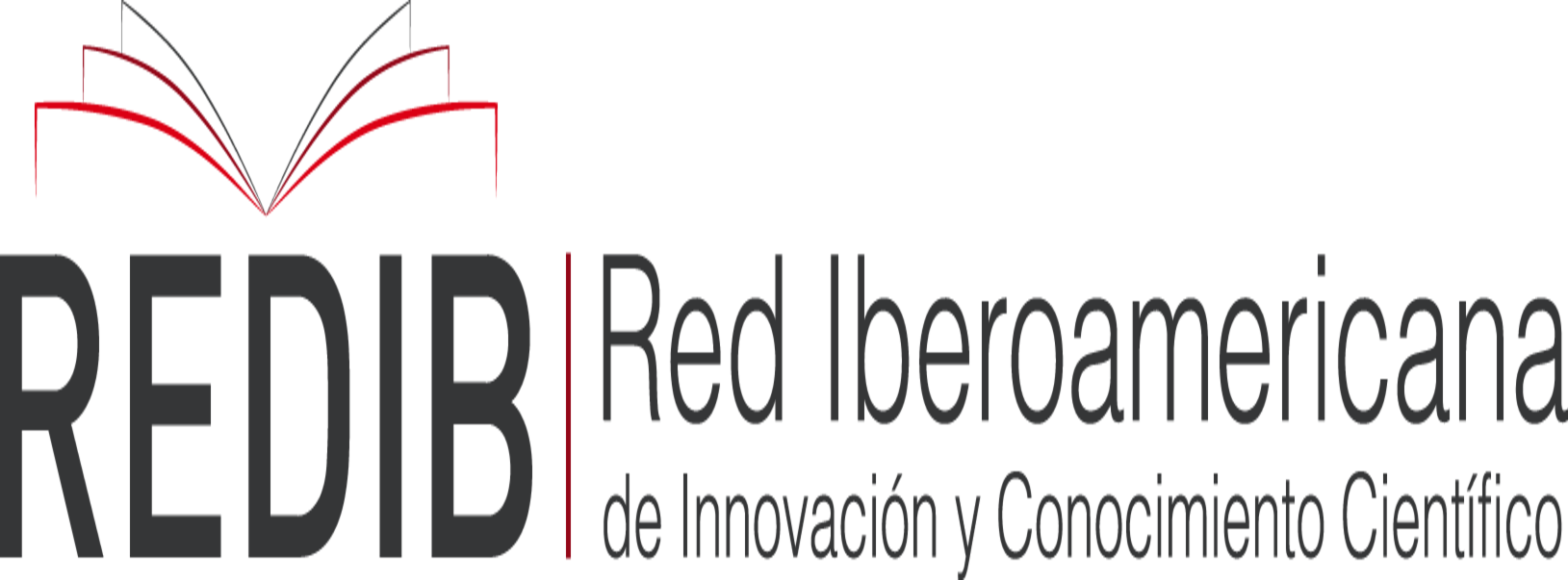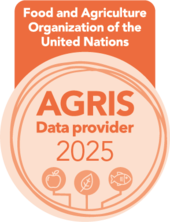Conversión de residuos lignocelulósicos urbanos en fuente de bioenergía mediante carbonización hidrotérmica
DOI:
https://doi.org/10.57188/manglar.2024.022Resumen
El proceso de carbonización hidrotérmica ha llamado la atención de la comunidad académica y científica como una tecnología emergente y ecológica para la transformación de los residuos lignocelulósicos urbanos en fuente de bioenergía en forma sólida (hidrocarbón), líquida y gaseosa. Esta revisión aborda la comprensión de las propiedades y el potencial uso de estos residuos como fuente de bioenergía. Se analizan las propiedades fisicoquímicas y energéticas de estos residuos, así como los parámetros de operación que influyen en su transformación. Además, se presentan nuevas perspectivas sobre los desafíos futuros relacionados con el uso potencial de estos residuos y el proceso de carbonización. La conversión sostenible de estos residuos urbanos en una fuente de bioenergía contribuirá a reducir la dependencia de los combustibles fósiles, minimizar las emisiones de gases de efecto invernadero, garantizar una gestión eficiente de los residuos urbanos y desarrollar una bioeconomía circular.
Descargas
Referencias
Ahmad, M. S., Klemeš, J. J., Alhumade, H., Elkamel, A., Mahmood, A., Shen, B., Ibrahim, M., Mukhtar, A., Saqib, S., Asif, S., & Bokhari, A. (2021). Thermo-kinetic study to elucidate the bioenergy potential of Maple Leaf Waste (MLW) by pyrolysis, TGA and kinetic modelling. Fuel, 293, 120349. https://doi.org/10.1016/j.fuel.2021.120349
Ahmad, M. S., Mehmood, M. A., Al Ayed, O. S., Ye, G., Luo, H., Ibrahim, M., Rashid, U., Arbi Nehdi, I., & Qadir, G. (2017). Kinetic analyses and pyrolytic behavior of Para grass (Urochloa mutica) for its bioenergy potential. Bioresource Technology, 224, 708-713. https://doi.org/10.1016/j.biortech.2016.10.090
Ahmed, O. Y., Ries, M. J., & Northrop, W. F. (2019). Emissions factors from distributed, small-scale biomass gasification power generation: Comparison to open burning and large-scale biomass power generation. Atmospheric Environment, 200, 221-227. https://doi.org/10.1016/j.atmosenv.2018.12.024
Akbari, M., Oyedun, A. O., & Kumar, A. (2019). Comparative energy and techno-economic analyses of two different configurations for hydrothermal carbonization of yard waste. Bioresource Technology Reports, 7, 100210. https://doi.org/10.1016/j.biteb.2019.100210
Ayiania, M., Terrell, E., Dunsmoor, A., Carbajal-Gamarra, F. M., & Garcia-Perez, M. (2019). Characterization of solid and vapor products from thermochemical conversion of municipal solid waste woody fractions. Waste Management, 84, 277-285. https://doi.org/10.1016/j.wasman.2018.11.042
Ayilara, M. S., Olanrewaju, O. S., Babalola, O. O., & Odeyemi, O. (2020). Waste Management through Composting: Challenges and Potentials. Sustainability, 12(11), Article 11. https://doi.org/10.3390/su12114456
Bach, Q.-V., Tran, K.-Q., Khalil, R., Skreiberg, Ø., & Seisenbaeva, G. (2013). Comparative Assessment of Wet Torrefaction. Energy & Fuels, 27, 6743-6753. https://doi.org/10.1021/ef401295w
Bayard, R., Benbelkacem, H., Gourdon, R., & Buffière, P. (2018). Characterization of selected municipal solid waste components to estimate their biodegradability. Journal of Environmental Management, 216, 4-12. https://doi.org/10.1016/j.jenvman.2017.04.087
Brown, A. E., Hammerton, J. M., Camargo-Valero, M. A., & Ross, A. B. (2022). Integration of Hydrothermal Carbonisation and Anaerobic Digestion for the Energy Valorisation of Grass. Energies, 15(10), Article 10. https://doi.org/10.3390/en15103495
Carrasco, S., Silva, J., Pino-Cortés, E., Gómez, J., Vallejo, F., Díaz-Robles, L., Campos, V., Cubillos, F., Pelz, S., Paczkowski, S., Cereceda-Balic, F., Vergara-Fernández, A., Lapuerta, M., Pazo, A., Monedero, E., & Hoekman, K. (2020). Experimental Study on Hydrothermal Carbonization of Lignocellulosic Biomass with Magnesium Chloride for Solid Fuel Production. Processes, 8(4), Article 4. https://doi.org/10.3390/pr8040444
Chen, W.-H., Nižetić, S., Sirohi, R., Huang, Z., Luque, R., M.Papadopoulos, A., Sakthivel, R., Phuong Nguyen, X., & Tuan Hoang, A. (2022). Liquid hot water as sustainable biomass pretreatment technique for bioenergy production: A review. Bioresource Technology, 344, 126207. https://doi.org/10.1016/j.biortech.2021.126207
Dang, H., Xu, R., Zhang, J., Wang, M., & Xu, K. (2023). Hydrothermal carbonization of waste furniture for clean blast furnace fuel production: Physicochemical, gasification characteristics and conversion mechanism investigation. Chemical Engineering Journal, 469, 143980. https://doi.org/10.1016/j.cej.2023.143980
Duque, A., Álvarez, C., Doménech, P., Manzanares, P., & Moreno, A. D. (2021). Advanced Bioethanol Production: From Novel Raw Materials to Integrated Biorefineries. Processes, 9(2), Article 2. https://doi.org/10.3390/pr9020206
Fang, J., Zhan, L., Ok, Y. S., & Gao, B. (2018). Minireview of potential applications of hydrochar derived from hydrothermal carbonization of biomass. Journal of Industrial and Engineering Chemistry, 57, 15-21. https://doi.org/10.1016/j.jiec.2017.08.026
Foong, S. Y., Liew, R. K., Yang, Y., Cheng, Y. W., Yek, P. N. Y., Wan Mahari, W. A., Lee, X. Y., Han, C. S., Vo, D.-V. N., Van Le, Q., Aghbashlo, M., Tabatabaei, M., Sonne, C., Peng, W., & Lam, S. S. (2020). Valorization of biomass waste to engineered activated biochar by microwave pyrolysis: Progress, challenges, and future directions. Chemical Engineering Journal, 389, 124401. https://doi.org/10.1016/j.cej.2020.124401
Funke, A., & Ziegler, F. (2010). Hydrothermal carbonization of biomass: A summary and discussion of chemical mechanisms for process engineering. Biofuels, Bioproducts and Biorefining, 4(2), 160-177. https://doi.org/10.1002/bbb.198
Gallant, R., Farooque, A. A., He, S., Kang, K., & Hu, Y. (2022). A Mini-Review: Biowaste-Derived Fuel Pellet by Hydrothermal Carbonization Followed by Pelletizing. Sustainability, 14(19), Article 19. https://doi.org/10.3390/su141912530
Gallucci, K., Taglieri, L., Papa, A. A., Di Lauro, F., Ahmad, Z., & Gallifuoco, A. (2020). Non-Energy Valorization of Residual Biomasses via HTC: CO2 Capture onto Activated Hydrochars. Applied Sciences, 10(5), Article 5. https://doi.org/10.3390/app10051879
González-Arias, J., Baena-Moreno, F. M., Sánchez, M. E., & Cara-Jiménez, J. (2021). Optimizing hydrothermal carbonization of olive tree pruning: A techno-economic analysis based on experimental results. Science of The Total Environment, 784, 147169. https://doi.org/10.1016/j.scitotenv.2021.147169
González-Arias, J., Sánchez, M. E., Martínez, E. J., Covalski, C., Alonso-Simón, A., González, R., & Cara-Jiménez, J. (2020). Hydrothermal Carbonization of Olive Tree Pruning as a Sustainable Way for Improving Biomass Energy Potential: Effect of Reaction Parameters on Fuel Properties. Processes, 8(10), Article 10. https://doi.org/10.3390/pr8101201
Güleç, F., Riesco, L. M. G., Williams, O., Kostas, E. T., Samson, A., & Lester, E. (2021). Hydrothermal conversion of different lignocellulosic biomass feedstocks – Effect of the process conditions on hydrochar structures. Fuel, 302, 121166. https://doi.org/10.1016/j.fuel.2021.121166
Gupta, A., Thengane, S. K., & Mahajani, S. (2018). CO2 gasification of char from lignocellulosic garden waste: Experimental and kinetic study. Bioresource Technology, 263, 180-191. https://doi.org/10.1016/j.biortech.2018.04.097
Hansen, L. J., Fendt, S., & Spliethoff, H. (2022). Impact of hydrothermal carbonization on combustion properties of residual biomass. Biomass Conversion and Biorefinery, 12(7), 2541-2552. https://doi.org/10.1007/s13399-020-00777-z
Hla, S. S., & Roberts, D. (2015). Characterisation of chemical composition and energy content of green waste and municipal solid waste from Greater Brisbane, Australia. Waste Management (New York, N.Y.), 41, 12-19. https://doi.org/10.1016/j.wasman.2015.03.039
Hoover, A., Emerson, R., Williams, C. L., Ramirez-Corredores, M. M., Ray, A., Schaller, K., Hernandez, S., Li, C., & Walton, M. (2019). Grading Herbaceous Biomass for Biorefineries: A Case Study Based on Chemical Composition and Biochemical Conversion. BioEnergy Research, 12(4), 977-991. https://doi.org/10.1007/s12155-019-10028-3
Ipiales, R. P., Mohedano, A. F., Diaz, E., & de la Rubia, M. A. (2022). Energy recovery from garden and park waste by hydrothermal carbonisation and anaerobic digestion. Waste Management, 140, 100-109. https://doi.org/10.1016/j.wasman.2022.01.003
Jaideep, R., Lo, W. H., Lim, G. P., Chua, C. X., Gan, S., Lee, L. Y., & Thangalazhy-Gopakumar, S. (2021). Enhancement of fuel properties of yard waste through dry torrefaction. Materials Science for Energy Technologies, 4, 156-165. https://doi.org/10.1016/j.mset.2021.04.001
Kabir, M. J., Chowdhury, A. A., & Rasul, M. G. (2015). Pyrolysis of Municipal Green Waste: A Modelling, Simulation and Experimental Analysis. Energies, 8(8), Article 8. https://doi.org/10.3390/en8087522
Kambo, H. S., & Dutta, A. (2015). Comparative evaluation of torrefaction and hydrothermal carbonization of lignocellulosic biomass for the production of solid biofuel. Energy Conversion and Management, 105, 746-755. https://doi.org/10.1016/j.enconman.2015.08.031
Kang, K., Zhang, T., Sun, G., Zhu, M., Li, K., & Li, D. (2021). Valorization of tree leaves waste using microwave-assisted hydrothermal carbonization process. GCB Bioenergy, 13(10), 1690-1703. https://doi.org/10.1111/gcbb.12882
Khosravi, A., Zheng, H., Liu, Q., Hashemi, M., Tang, Y., & Xing, B. (2022). Production and characterization of hydrochars and their application in soil improvement and environmental remediation. Chemical Engineering Journal, 430, 133142. https://doi.org/10.1016/j.cej.2021.133142
Kim, D., Lee, K., & Park, K. Y. (2016). Upgrading the characteristics of biochar from cellulose, lignin, and xylan for solid biofuel production from biomass by hydrothermal carbonization. Journal of Industrial and Engineering Chemistry, 42, 95-100. https://doi.org/10.1016/j.jiec.2016.07.037
Köchermann, J., Görsch, K., Wirth, B., Mühlenberg, J., & Klemm, M. (2018). Hydrothermal carbonization: Temperature influence on hydrochar and aqueous phase composition during process water recirculation. Journal of Environmental Chemical Engineering, 6(4), 5481-5487. https://doi.org/10.1016/j.jece.2018.07.053
Kulkarni, P. S., Watwe, V. S., Hipparge, A. J., Sayyad, S. I., Sonawane, R. A., & Kulkarni, S. D. (2019). Valorization of Uncharred Dry Leaves of Ficus benjamina towards Cr (VI) removal from Water: Efficacy Influencing Factors and mechanism. Scientific Reports, 9(1), Article 1. https://doi.org/10.1038/s41598-019-55993-z
Lacey, J. A., Aston, J. E., & Thompson, V. S. (2018). Wear Properties of Ash Minerals in Biomass. Frontiers in Energy Research, 6, 119. https://doi.org/10.3389/fenrg.2018.00119
Lago, A., Sanz, M., Gordón, J. M., Fermoso, J., Pizarro, P., Serrano, D. P., & Moreno, I. (2022). Enhanced production of aromatic hydrocarbons and phenols by catalytic co-pyrolysis of fruit and garden pruning wastes. Journal of Environmental Chemical Engineering, 10(3), 107738. https://doi.org/10.1016/j.jece.2022.107738
Langsdorf, A., Volkmar, M., Holtmann, D., & Ulber, R. (2021). Material utilization of green waste: A review on potential valorization methods. Bioresources and Bioprocessing, 8(1), 19. https://doi.org/10.1186/s40643-021-00367-5
Lee, K.-C., Lim, M. S. W., Hong, Z.-Y., Chong, S., Tiong, T. J., Pan, G.-T., & Huang, C.-M. (2021). Coconut Shell-Derived Activated Carbon for High-Performance Solid-State Supercapacitors. Energies, 14(15), Article 15. https://doi.org/10.3390/en14154546
Li, Y., Zhou, L. W., & Wang, R. Z. (2017). Urban biomass and methods of estimating municipal biomass resources. Renewable and Sustainable Energy Reviews, 80, 1017-1030. https://doi.org/10.1016/j.rser.2017.05.214
Liu, X., Xie, Y., & Sheng, H. (2023). Green waste characteristics and sustainable recycling options. Resources, Environment and Sustainability, 11, 100098. https://doi.org/10.1016/j.resenv.2022.100098
Llanos, S. A. V., Gamarra, F. M. C., Collana, J. T. M., Scheineder, S. H., Chuquizuta, J. C. M., Mendoza, P. C., & Quispea, A. P. B. (2023). Estimation of Emission Factors and Ignitability Index from the Physicochemical Characterization of Ficus Benjamina for Energy Purposes. Chemical Engineering Transactions, 103, 931-936. https://doi.org/10.3303/CET23103156
Lu, X., Pellechia, P. J., Flora, J. R. V., & Berge, N. D. (2013). Influence of reaction time and temperature on product formation and characteristics associated with the hydrothermal carbonization of cellulose. Bioresource Technology, 138, 180-190. https://doi.org/10.1016/j.biortech.2013.03.163
Lucian, M., & Fiori, L. (2017). Hydrothermal Carbonization of Waste Biomass: Process Design, Modeling, Energy Efficiency and Cost Analysis. Energies, 10(2), Article 2. https://doi.org/10.3390/en10020211
Maccarini, A. C., Bessa, M. R., & Errera, M. R. (2020). Energy valuation of urban pruning residues feasibility assessment. Biomass and Bioenergy, 142, 105763. https://doi.org/10.1016/j.biombioe.2020.105763
Magdziarz, A., Wilk, M., & Wądrzyk, M. (2020). Pyrolysis of hydrochar derived from biomass – Experimental investigation. Fuel, 267, 117246. https://doi.org/10.1016/j.fuel.2020.117246
Maniscalco, M. P., Volpe, M., & Messineo, A. (2020). Hydrothermal Carbonization as a Valuable Tool for Energy and Environmental Applications: A Review. Energies, 13(16), Article 16. https://doi.org/10.3390/en13164098
Marzbali, M. H., Paz-Ferreiro, J., Kundu, S., Ramezani, M., Halder, P., Patel, S., White, T., Madapusi, S., & Shah, K. (2021). Investigations into distribution and characterisation of products formed during hydrothermal carbonisation of paunch waste. Journal of Environmental Chemical Engineering, 9(1), 104672. https://doi.org/10.1016/j.jece.2020.104672
McKendry, P. (2002). Energy production from biomass (part 1): Overview of biomass. Bioresource Technology, 83(1), 37-46. https://doi.org/10.1016/S0960-8524(01)00118-3
Medina-Martos, E., Istrate, I.-R., Villamil, J. A., Gálvez-Martos, J.-L., Dufour, J., & Mohedano, Á. F. (2020). Techno-economic and life cycle assessment of an integrated hydrothermal carbonization system for sewage sludge. Journal of Cleaner Production, 277, 122930. https://doi.org/10.1016/j.jclepro.2020.122930
Mendoza Martinez, C. L., Alves Rocha, E. P., Oliveira Carneiro, A. de C., Borges Gomes, F. J., Ribas Batalha, L. A., Vakkilainen, E., & Cardoso, M. (2019). Characterization of residual biomasses from the coffee production chain and assessment the potential for energy purposes. Biomass and Bioenergy, 120, 68-76. https://doi.org/10.1016/j.biombioe.2018.11.003
Mendoza Martinez, C. L., Sermyagina, E., Saari, J., Silva de Jesus, M., Cardoso, M., Matheus de Almeida, G., & Vakkilainen, E. (2021). Hydrothermal carbonization of lignocellulosic agro-forest based biomass residues. Biomass and Bioenergy, 147, 106004. https://doi.org/10.1016/j.biombioe.2021.106004
Minaret, J., & Dutta, A. (2016). Comparison of liquid and vapor hydrothermal carbonization of corn husk for the use as a solid fuel. Bioresource Technology, 200, 804-811. https://doi.org/10.1016/j.biortech.2015.11.010
Mohammed, I. S., Na, R., Kushima, K., & Shimizu, N. (2020). Investigating the Effect of Processing Parameters on the Products of Hydrothermal Carbonization of Corn Stover. Sustainability, 12(12), Article 12. https://doi.org/10.3390/su12125100
Moreno, A. I., & Font, R. (2015). Pyrolysis of furniture wood waste: Decomposition and gases evolved. Journal of Analytical and Applied Pyrolysis, 113, 464-473. https://doi.org/10.1016/j.jaap.2015.03.008
Moreno, A. I., Font, R., & Conesa, J. A. (2016). Physical and chemical evaluation of furniture waste briquettes. Waste Management, 49, 245-252. https://doi.org/10.1016/j.wasman.2016.01.048
Nakason, K., Panyapinyopol, B., Kanokkantapong, V., Viriya-empikul, N., Kraithong, W., & Pavasant, P. (2018). Characteristics of hydrochar and liquid fraction from hydrothermal carbonization of cassava rhizome. Journal of the Energy Institute, 91(2), 184-193. https://doi.org/10.1016/j.joei.2017.01.002
Panigrahi, S., & Dubey, B. K. (2019). Electrochemical pretreatment of yard waste to improve biogas production: Understanding the mechanism of delignification, and energy balance. Bioresource Technology, 292, 121958. https://doi.org/10.1016/j.biortech.2019.121958
Paul, S., Dutta, A., & Defersha, F. (2018). Biocarbon, biomethane and biofertilizer from corn residue: A hybrid thermo-chemical and biochemical approach. Energy, 165, 370-384. https://doi.org/10.1016/j.energy.2018.09.182
Pauline, A. L., & Joseph, K. (2020). Hydrothermal carbonization of organic wastes to carbonaceous solid fuel – A review of mechanisms and process parameters. Fuel, 279, 118472. https://doi.org/10.1016/j.fuel.2020.118472
Pedroza, M. M., Neves, L. H. D., Paz, E. C. S., Silva, F. M., Rezende, C. S. A., Colen, A. G. N., Arruda, M. G., Pedroza, M. M., Neves, L. H. D., Paz, E. C. S., Silva, F. M., Rezende, C. S. A., Colen, A. G. N., & Arruda, M. G. (2021). Activated charcoal production from tree pruning in the Amazon region of Brazil for the treatment of gray water. Journal of Applied Research and Technology, 19(1), 49-65.
Pérez-Arévalo, J. J., & Velázquez-Martí, B. (2018). Evaluation of pruning residues of Ficus benjamina as a primary biofuel material. Biomass and Bioenergy, 108, 217-223. https://doi.org/10.1016/j.biombioe.2017.11.017
Phuang, Y. W., Ng, W. Z., Khaw, S. S., Yap, Y. Y., Gan, S., Lee, L. Y., & Thangalazhy-Gopakumar, S. (2021). Wet torrefaction pre-treatment of yard waste to improve the fuel properties. Materials Science for Energy Technologies, 4, 211-223. https://doi.org/10.1016/j.mset.2021.06.005
Puccini, M., Ceccarini, L., Antichi, D., Seggiani, M., Tavarini, S., Hernandez Latorre, M., & Vitolo, S. (2018). Hydrothermal Carbonization of Municipal Woody and Herbaceous Prunings: Hydrochar Valorisation as Soil Amendment and Growth Medium for Horticulture. Sustainability, 10(3), Article 3. https://doi.org/10.3390/su10030846
Qadi, N., Takeno, K., Mosqueda, A., Kobayashi, M., Motoyama, Y., & Yoshikawa, K. (2019). Effect of Hydrothermal Carbonization Conditions on the Physicochemical Properties and Gasification Reactivity of Energy Grass. Energy & Fuels, 33(7), 6436-6443. https://doi.org/10.1021/acs.energyfuels.9b00994
Reza, M. S., Taweekun, J., Afroze, S., Siddique, S. A., Islam, M. S., Wang, C., & Azad, A. K. (2023). Investigation of Thermochemical Properties and Pyrolysis of Barley Waste as a Source for Renewable Energy. Sustainability, 15(2), Article 2. https://doi.org/10.3390/su15021643
Reza, M. T., Uddin, M. H., Lynam, J. G., Hoekman, S. K., & Coronella, C. J. (2014). Hydrothermal carbonization of loblolly pine: Reaction chemistry and water balance. Biomass Conversion and Biorefinery, 4(4), 311-321. https://doi.org/10.1007/s13399-014-0115-9
Romano, P., Stampone, N., & Di Giacomo, G. (2023). Evolution and Prospects of Hydrothermal Carbonization. Energies, 16(7), Article 7. https://doi.org/10.3390/en16073125
Saqib, N. U., Oh, M., Jo, W., Park, S.-K., & Lee, J.-Y. (2017). Conversion of dry leaves into hydrochar through hydrothermal carbonization (HTC). Journal of Material Cycles and Waste Management, 19(1), 111-117. https://doi.org/10.1007/s10163-015-0371-1
Şen, A. U., & Pereira, H. (2021). State-of-the-Art Char Production with a Focus on Bark Feedstocks: Processes, Design, and Applications. Processes, 9(1), Article 1. https://doi.org/10.3390/pr9010087
Sharma, H. B., & Dubey, B. K. (2020a). Binderless fuel pellets from hydrothermal carbonization of municipal yard waste: Effect of severity factor on the hydrochar pellets properties. Journal of Cleaner Production, 277, 124295. https://doi.org/10.1016/j.jclepro.2020.124295
Sharma, H. B., & Dubey, B. K. (2020b). Co-hydrothermal carbonization of food waste with yard waste for solid biofuel production: Hydrochar characterization and its pelletization. Waste Management, 118, 521-533. https://doi.org/10.1016/j.wasman.2020.09.009
Sharma, H. B., Panigrahi, S., & Dubey, B. K. (2019). Hydrothermal carbonization of yard waste for solid bio-fuel production: Study on combustion kinetic, energy properties, grindability and flowability of hydrochar. Waste Management, 91, 108-119. https://doi.org/10.1016/j.wasman.2019.04.056
Sharma, H. B., Sarmah, A. K., & Dubey, B. (2020). Hydrothermal carbonization of renewable waste biomass for solid biofuel production: A discussion on process mechanism, the influence of process parameters, environmental performance and fuel properties of hydrochar. Renewable and Sustainable Energy Reviews, 123, 109761. https://doi.org/10.1016/j.rser.2020.109761
Sharma, K. D., & Jain, S. (2020). Municipal solid waste generation, composition, and management: The global scenario. Social Responsibility Journal, 16(6), 917-948. https://doi.org/10.1108/SRJ-06-2019-0210
Silva de Souza Lima Cano, N., Iacovidou, E., & Rutkowski, E. W. (2022). Typology of municipal solid waste recycling value chains: A global perspective. Journal of Cleaner Production, 336, 130386. https://doi.org/10.1016/j.jclepro.2022.130386
Singh, Y. D., Mahanta, P., & Bora, U. (2017). Comprehensive characterization of lignocellulosic biomass through proximate, ultimate and compositional analysis for bioenergy production. Renewable Energy, 103, 490-500. https://doi.org/10.1016/j.renene.2016.11.039
Śliz, M., & Wilk, M. (2020). A comprehensive investigation of hydrothermal carbonization: Energy potential of hydrochar derived from Virginia mallow. Renewable Energy, 156, 942-950. https://doi.org/10.1016/j.renene.2020.04.124
Suárez, L., Díaz, T. E., Benavente-Ferraces, I., Plaza, C., Almeida, M., & Centeno, T. A. (2022). Hydrothermal treatment as a complementary tool to control the invasive Pampas grass (Cortaderia selloana). Science of The Total Environment, 807, 150796. https://doi.org/10.1016/j.scitotenv.2021.150796
Tabal, A., Barakat, A., Aboulkas, A., & El harfi, K. (2021). Pyrolysis of ficus nitida wood: Determination of kinetic and thermodynamic parameters. Fuel, 283, 119253. https://doi.org/10.1016/j.fuel.2020.119253
Usman, M., Ren, S., Ji, M., O-Thong, S., Qian, Y., Luo, G., & Zhang, S. (2020). Characterization and biogas production potentials of aqueous phase produced from hydrothermal carbonization of biomass – Major components and their binary mixtures. Chemical Engineering Journal, 388, 124201. https://doi.org/10.1016/j.cej.2020.124201
Vega, L. Y., López, L., Valdés, C. F., & Chejne, F. (2019). Assessment of energy potential of wood industry wastes through thermochemical conversions. Waste Management, 87, 108-118. https://doi.org/10.1016/j.wasman.2019.01.048
Velázquez-Martí, B., Gaibor-Cházvez, J., Niño-Ruiz, Z., & Narbona-Sahuquillo, S. (2018). Complete characterization of pruning waste from the lechero tree (Euphorbia laurifolia L.) as raw material for biofuel. Renewable Energy, 129, 629-637. https://doi.org/10.1016/j.renene.2018.06.050
Velvizhi, G., Goswami, C., Shetti, N. P., Ahmad, E., Kishore Pant, K., & Aminabhavi, T. M. (2022). Valorisation of lignocellulosic biomass to value-added products: Paving the pathway towards low-carbon footprint. Fuel, 313, 122678. https://doi.org/10.1016/j.fuel.2021.122678
Voća, N., Leto, J., Karažija, T., Bilandžija, N., Peter, A., Kutnjak, H., Šurić, J., & Poljak, M. (2021). Energy Properties and Biomass Yield of Miscanthus x Giganteus Fertilized by Municipal Sewage Sludge. Molecules, 26(14), 4371. https://doi.org/10.3390/molecules26144371
Volpe, M., Goldfarb, J. L., & Fiori, L. (2018). Hydrothermal carbonization of Opuntia ficus-indica cladodes: Role of process parameters on hydrochar properties. Bioresource Technology, 247, 310-318. https://doi.org/10.1016/j.biortech.2017.09.072
Wang, S., Dai, G., Yang, H., & Luo, Z. (2017). Lignocellulosic biomass pyrolysis mechanism: A state-of-the-art review. Progress in Energy and Combustion Science, 62, 33-86. https://doi.org/10.1016/j.pecs.2017.05.004
Wilk, M., & Magdziarz, A. (2017). Hydrothermal carbonization, torrefaction and slow pyrolysis of Miscanthus giganteus. Energy, 140, 1292-1304. https://doi.org/10.1016/j.energy.2017.03.031
Wilk, M., Magdziarz, A., Kalemba-Rec, I., & Szymańska-Chargot, M. (2020). Upgrading of green waste into carbon-rich solid biofuel by hydrothermal carbonization: The effect of process parameters on hydrochar derived from acacia. Energy, 202, 117717. https://doi.org/10.1016/j.energy.2020.117717
Wu, Q., Yu, S., Hao, N., Wells, T., Meng, X., Li, M., Pu, Y., Liu, S., & Ragauskas, A. J. (2017). Characterization of products from hydrothermal carbonization of pine. Bioresource Technology, 244, 78-83. https://doi.org/10.1016/j.biortech.2017.07.138
Xin, S., Mi, T., Liu, X., & Huang, F. (2018). Effect of torrefaction on the pyrolysis characteristics of high moisture herbaceous residues. Energy, 152, 586-593. https://doi.org/10.1016/j.energy.2018.03.104
Yan, J., Oyedeji, O., Leal, J. H., Donohoe, B. S., Semelsberger, T. A., Li, C., Hoover, A. N., Webb, E., Bose, E. A., Zeng, Y., Williams, C. L., Schaller, K. D., Sun, N., Ray, A. E., & Tanjore, D. (2020). Characterizing Variability in Lignocellulosic Biomass: A Review. ACS Sustainable Chemistry & Engineering, 8(22), 8059-8085. https://doi.org/10.1021/acssuschemeng.9b06263
Yang, G., Song, S., Li, J., Tang, Z., Ye, J., & Yang, J. (2019). Preparation and CO2 adsorption properties of porous carbon by hydrothermal carbonization of tree leaves. Journal of Materials Science & Technology, 35(5), 875-884. https://doi.org/10.1016/j.jmst.2018.11.019
Yao, Z., Ma, X., & Lin, Y. (2016). Effects of hydrothermal treatment temperature and residence time on characteristics and combustion behaviors of green waste. Applied Thermal Engineering, 104, 678-686. https://doi.org/10.1016/j.applthermaleng.2016.05.111
Zaccariello, L., Battaglia, D., Morrone, B., & Mastellone, M. L. (2022). Hydrothermal Carbonization: A Pilot-Scale Reactor Design for Bio-waste and Sludge Pre-treatment. Waste and Biomass Valorization, 13(9), 3865-3876. https://doi.org/10.1007/s12649-022-01859-x
Zhang, L., & Sun, X. (2016). Influence of bulking agents on physical, chemical, and microbiological properties during the two-stage composting of green waste. Waste Management, 48, 115-126. https://doi.org/10.1016/j.wasman.2015.11.032
Zjup, W., Yan, M., Zhang, S., Wibowo, H., Grisdanurak, N., Cai, Yi, Zhou, Xuanyou, Kanchanatip, E., & Antoni, A. (2020). Biochar and pyrolytic gas properties from pyrolysis of simulated municipal solid waste (SMSW) under pyrolytic gas atmosphere. Waste Disposal & Sustainable Energy, 2. https://doi.org/10.1007/s42768-019-00030-y
Publicado
Número
Sección
Licencia
Derechos de autor 2024 Segundo Vásquez Llanos, Ada Barturén Quispe, Marilín Sánchez Purihuaman, Sebastián Huangal Scheineder, Alfredo Arroyo Sánchez, Cristian Visconde Beltran, Jorge Flores Franco, Carmen Carreño-Farfán, Felix M. Carbajal Gamarra

Esta obra está bajo una licencia internacional Creative Commons Atribución 4.0.

Manglar is an open access journal distributed under the terms and conditions of Creative Commons Attribution 4.0 International license









